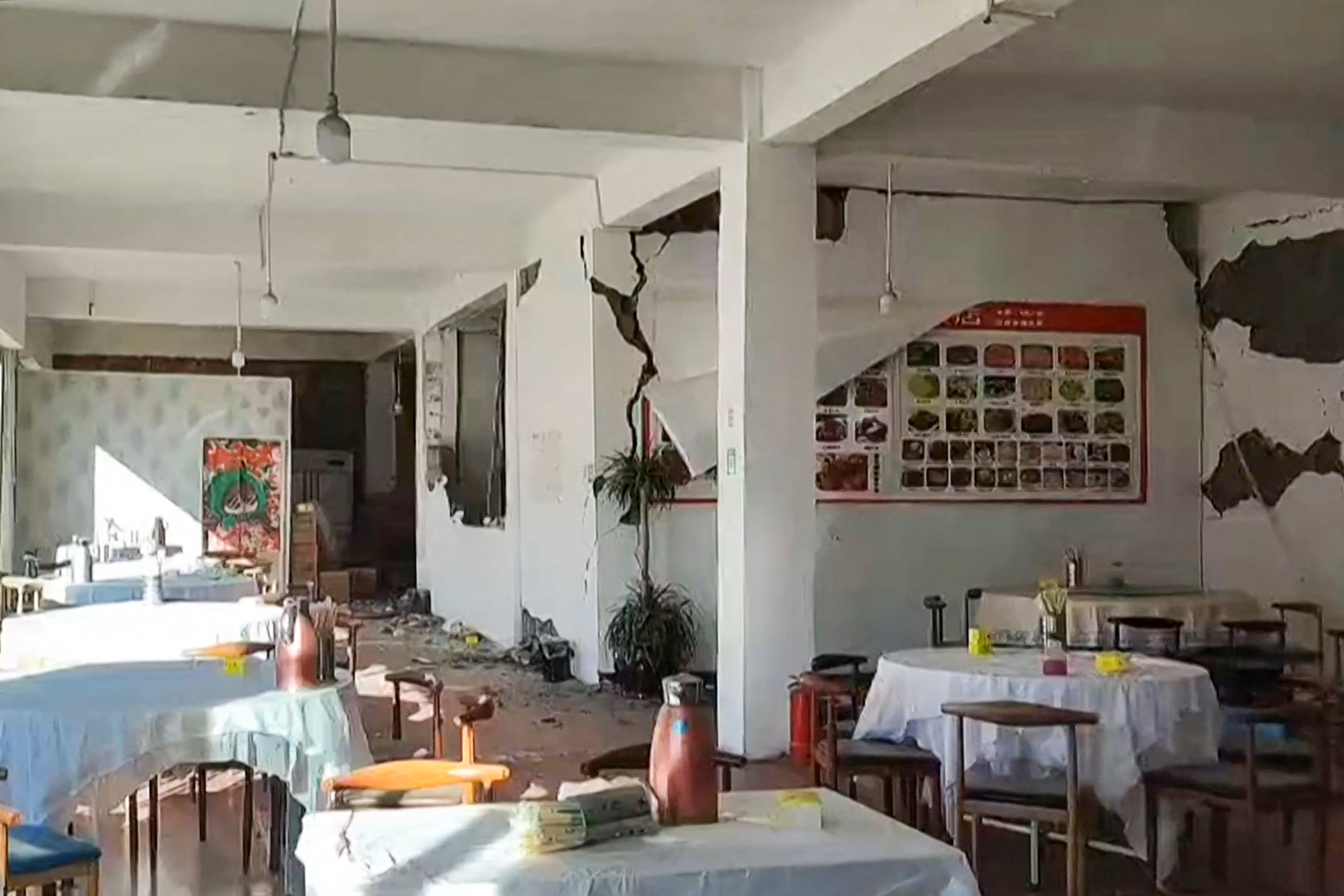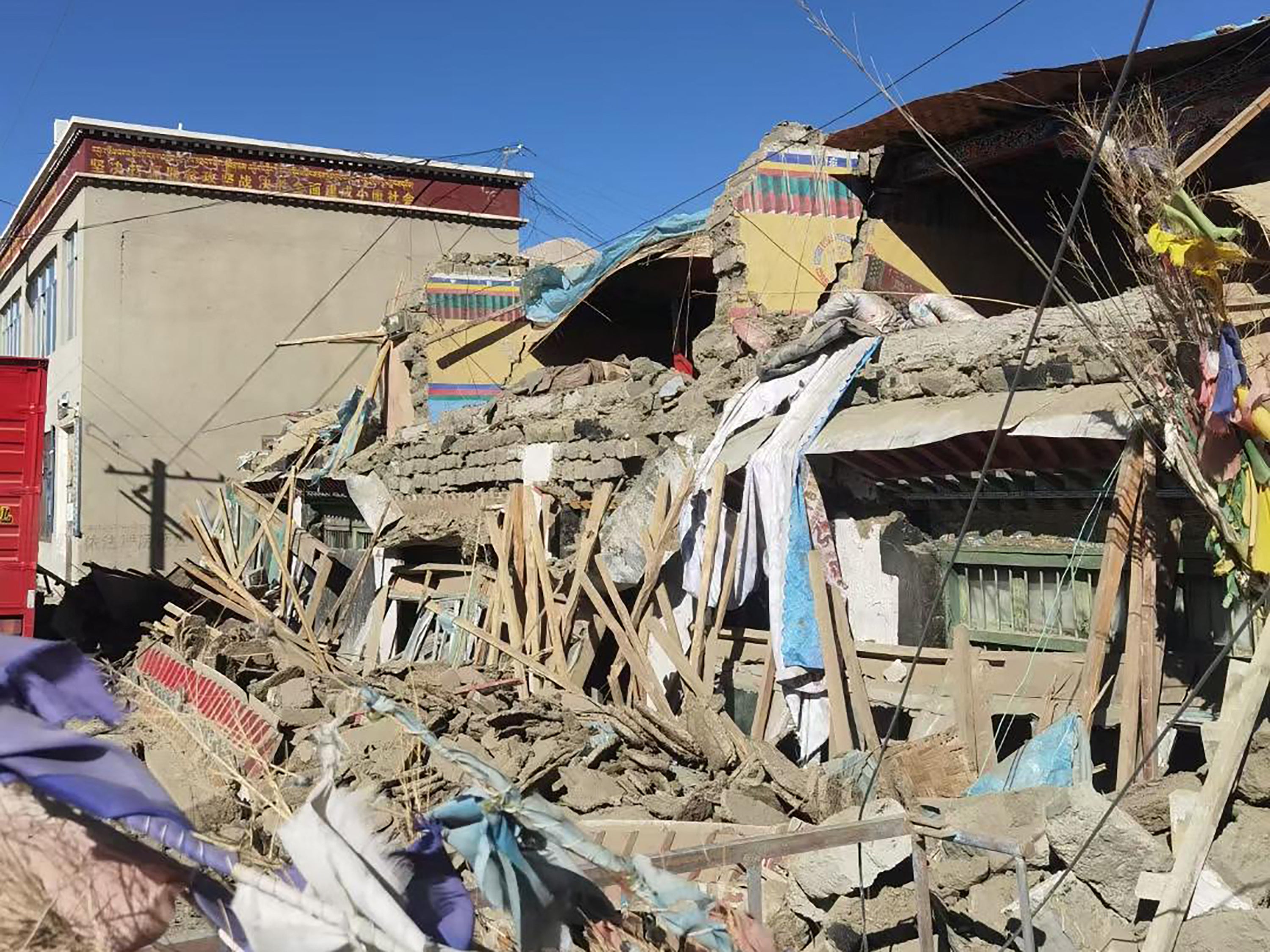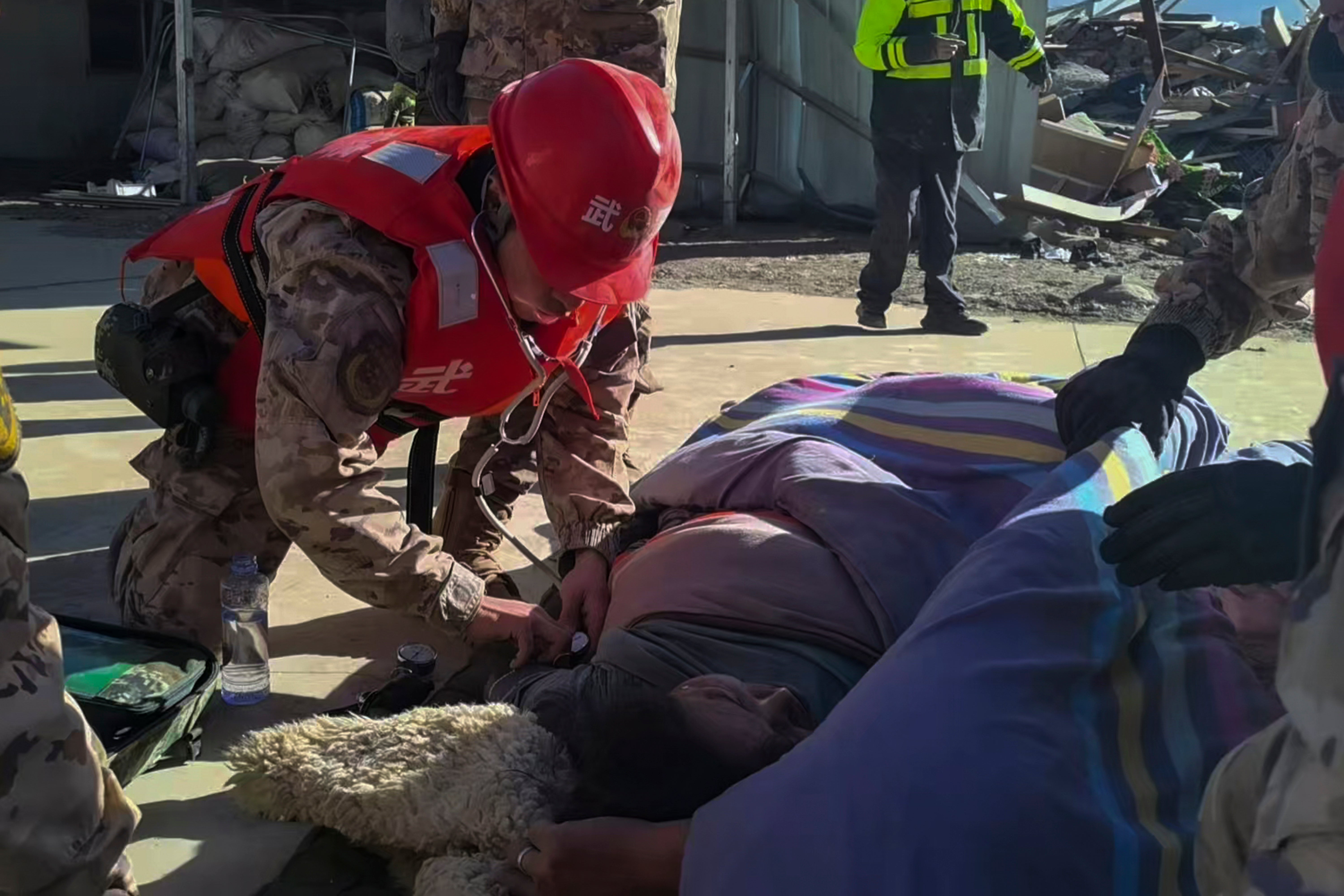Tibet earthquake rescuers race to reach survivors trapped in freezing conditions
Survivors at risk of hypothermia and frostbite as night temperature drops to -18C
Your support helps us to tell the story
From reproductive rights to climate change to Big Tech, The Independent is on the ground when the story is developing. Whether it's investigating the financials of Elon Musk's pro-Trump PAC or producing our latest documentary, 'The A Word', which shines a light on the American women fighting for reproductive rights, we know how important it is to parse out the facts from the messaging.
At such a critical moment in US history, we need reporters on the ground. Your donation allows us to keep sending journalists to speak to both sides of the story.
The Independent is trusted by Americans across the entire political spectrum. And unlike many other quality news outlets, we choose not to lock Americans out of our reporting and analysis with paywalls. We believe quality journalism should be available to everyone, paid for by those who can afford it.
Your support makes all the difference.Rescue workers in China’s mountainous Tibet region are racing to reach survivors trapped under the rubble as night temperatures drop far below freezing point following a powerful earthquake.
The search for survivors entered the second day on Wednesday after a 7.1-magnitude earthquake killed at least 126 people, injured 188, and flattened thousands of homes.
The earthquake hit at around 9am local time with its epicentre in Tingri county, 80km north of Mount Everest, triggering powerful jolts in neighbouring Nepal, Bhutan and India, none of which have reported any damage or casualties so far.
Fear is growing that survivors could be struck by hypothermia or frostbite. Many of the rescued survivors and those left homeless spent the night in the open even as temperature dropped to -18C. Power and water remain cut off due to the disaster.

Tents, food rations and electrical generators had reached the area by late Tuesday and all sections of the road damaged by the disaster had been reopened, Chinese state broadcaster CCTV said.
At least 407 people trapped under the debris were pulled out by rescue teams on Tuesday and over 30,000 affected residents were relocated, Xinhua reported.
Authorities were racing against time to erect tents for the relocated residents to protect them from freezing temperatures, the news agency added.
According to a preliminary survey, the earthquake flattened around 3,600 houses in the Shigatse region, which is home to about 800,000 people, Chinese state media reported on Tuesday.
More than 500 people and 106 ambulances had been dispatched to help the injured.

Pasang Tsering, 49, a resident of Shigatse, told Xinhua the second shock was more powerful and caused the most damage. "The first shock wave struck before dawn and it made lights and furniture shake,” he said. "Then came a second and stronger one, so I dashed outside immediately.”
Another resident, also named Pasang, said it was the biggest earthquake he had ever witnessed.
"We’re now most concerned with where to spend the night. The village has some spare tents, and officials said more are on the way,” he said.

More than 500 aftershocks with magnitudes of up to 4.4 had followed the quake as of 8am local time on Wednesday, the China Earthquake Networks Centre said.
It was the worst earthquake in China since a 6.2-magnitude quake in 2023 killed at least 149 people in a remote northwestern region of the country.
In 2008, an 8-magnitude earthquake hit Sichuan’s Chengdu, claiming the lives of at least 70,000 people, the deadliest quake to hit China since the 1976 Tangshan quake had killed at least 242,000 people.
Join our commenting forum
Join thought-provoking conversations, follow other Independent readers and see their replies
Comments